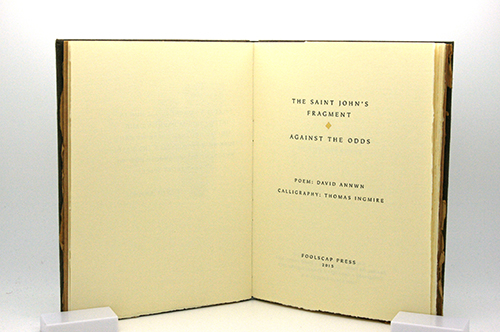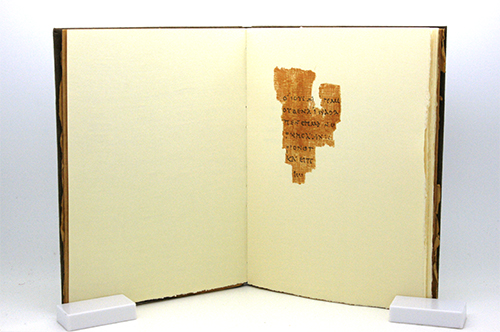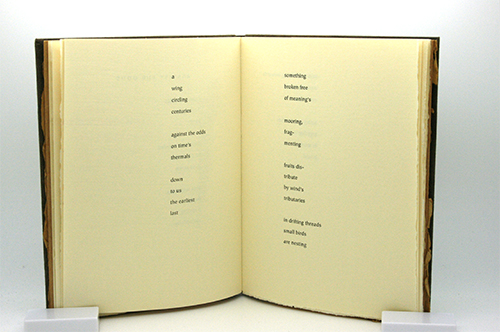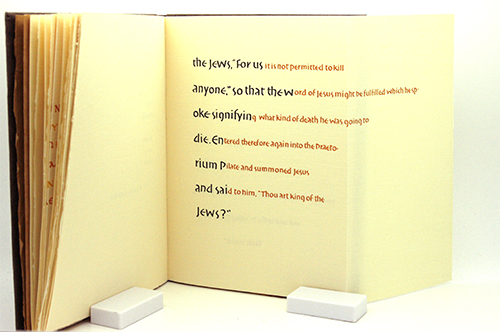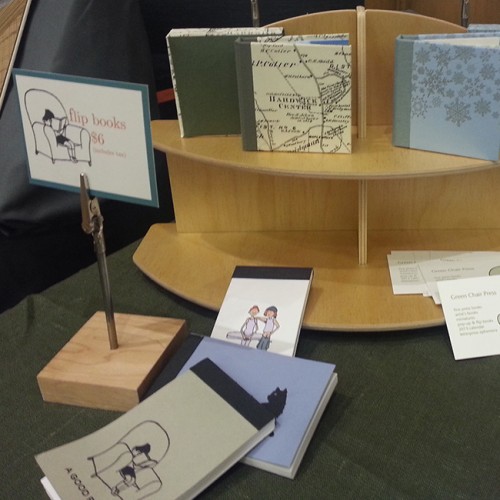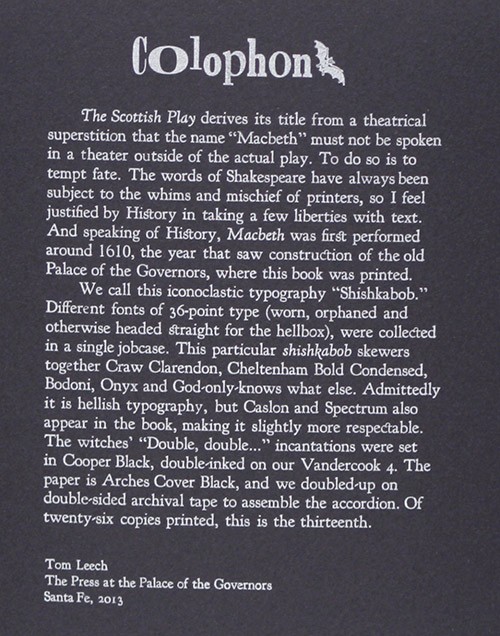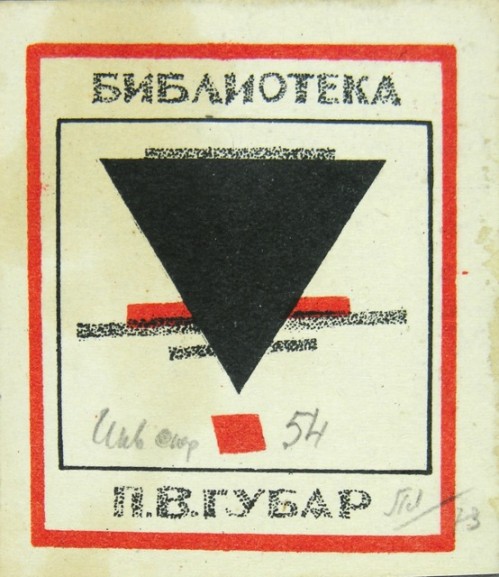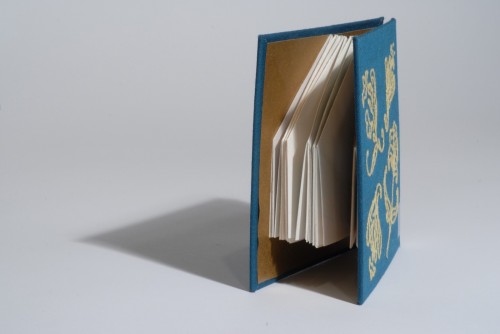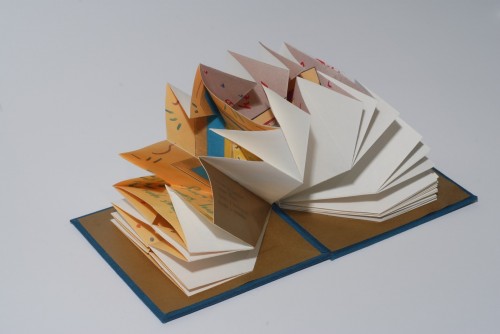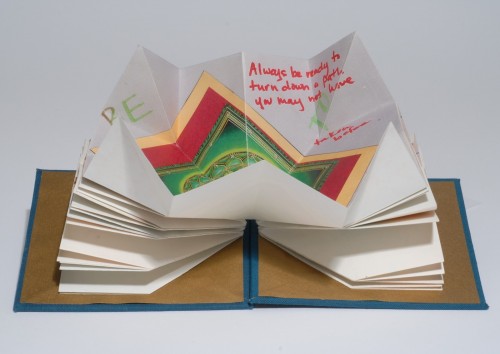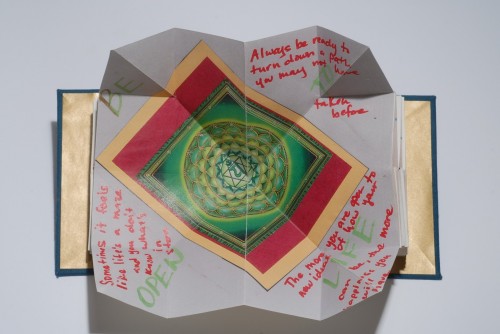I wanted to buy a book for my collection at Codex, and after a lot of searching for one that had poetry, letterpress, and would be an inspiration for my own work, I settled on Foolscap Press’ The Saint John’s Fragment. The book is based on a unique book by poet David Annwn and calligrapher Thomas Ingmire. The Saint John’s Fragment is a piece from a papyrus codex that measures 3.5 by 2.5 inches at its widest. One side contains parts of seven lines from the Gospel of John 18:31–33, in Greek, and the other contains parts of seven lines from verses 37–38. David Annwn’s poem “Against the Odds” is in response to the fragment, describing what it looks like, what it might mean, and the mystery of it even existing today. At the end of the poem, a page unfolds with Ingmire’s beautiful calligraphy showing the fragment and the calligraphy shows the image of the actual fragment and the missing extended text (see last image below). See more about the book on Foolscap Press’ website and the original book on Ingmire’s blog. Below, click on the pictures to see a much large image.

